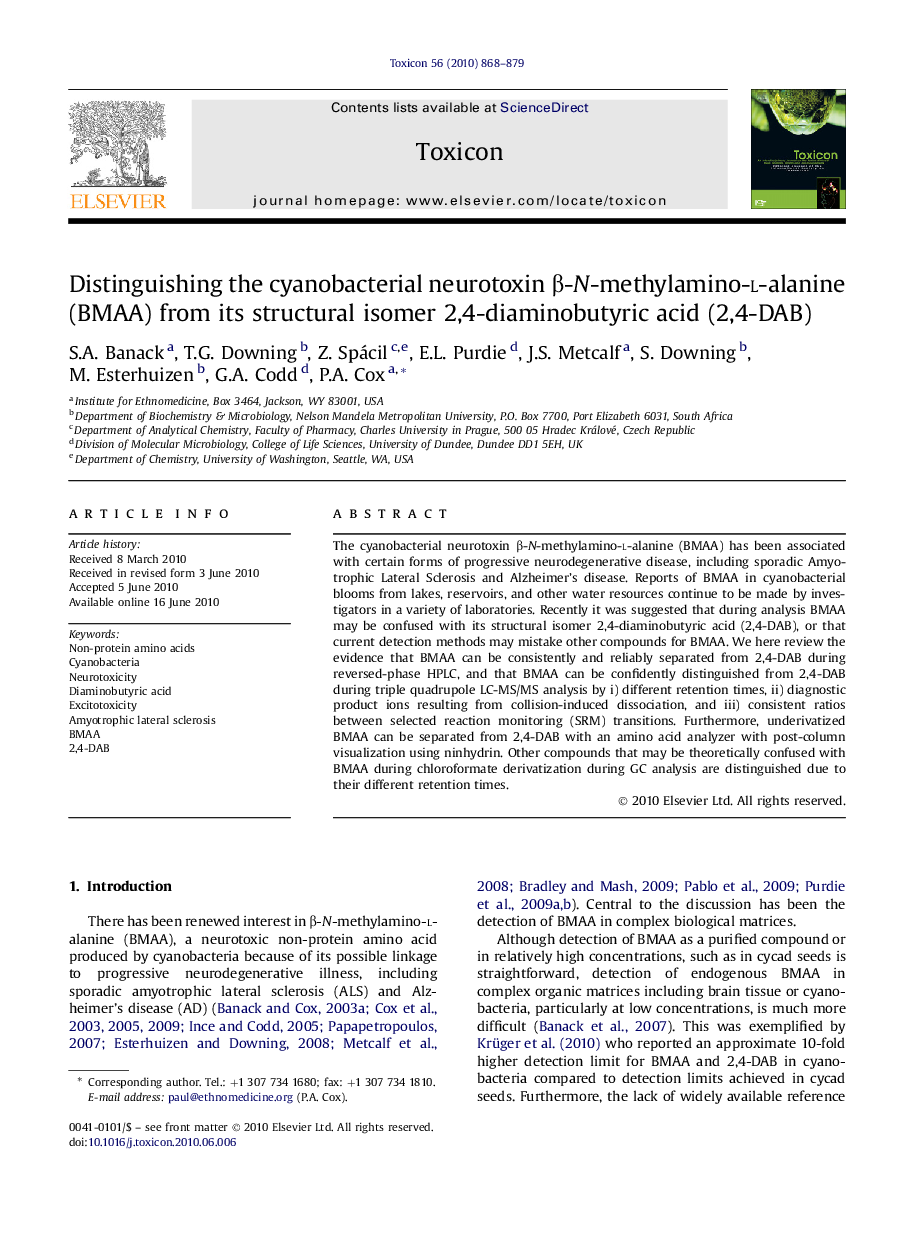| Article ID | Journal | Published Year | Pages | File Type |
|---|---|---|---|---|
| 2065522 | Toxicon | 2010 | 12 Pages |
The cyanobacterial neurotoxin β-N-methylamino-l-alanine (BMAA) has been associated with certain forms of progressive neurodegenerative disease, including sporadic Amyotrophic Lateral Sclerosis and Alzheimer’s disease. Reports of BMAA in cyanobacterial blooms from lakes, reservoirs, and other water resources continue to be made by investigators in a variety of laboratories. Recently it was suggested that during analysis BMAA may be confused with its structural isomer 2,4-diaminobutyric acid (2,4-DAB), or that current detection methods may mistake other compounds for BMAA. We here review the evidence that BMAA can be consistently and reliably separated from 2,4-DAB during reversed-phase HPLC, and that BMAA can be confidently distinguished from 2,4-DAB during triple quadrupole LC-MS/MS analysis by i) different retention times, ii) diagnostic product ions resulting from collision-induced dissociation, and iii) consistent ratios between selected reaction monitoring (SRM) transitions. Furthermore, underivatized BMAA can be separated from 2,4-DAB with an amino acid analyzer with post-column visualization using ninhydrin. Other compounds that may be theoretically confused with BMAA during chloroformate derivatization during GC analysis are distinguished due to their different retention times.
